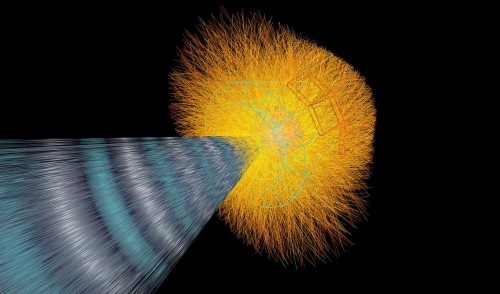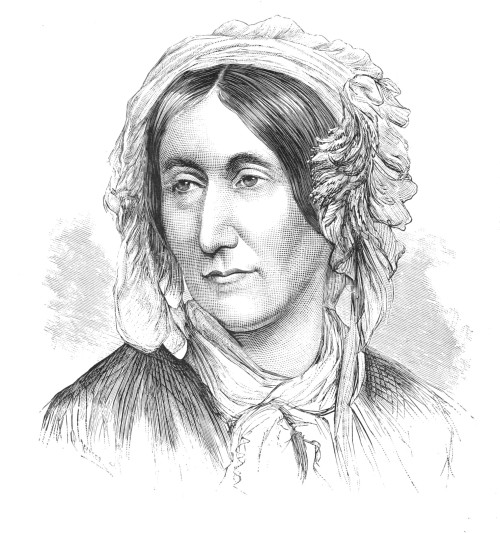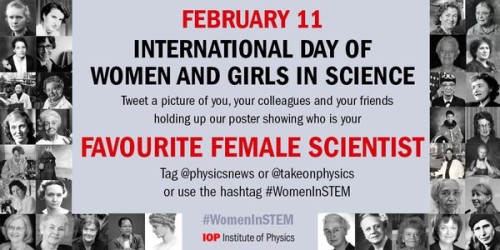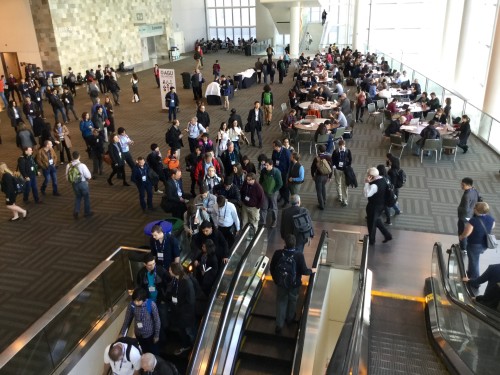Posts by: James Dacey
From physics degree to Hollywood
By James Dacey
This summer many of you will watch smoke billowing out of buildings as yet another villain wreaks havoc on the New York skyline in the latest Hollywood blockbuster. I’m willing to bet that as you eat your popcorn you won’t be thinking about the Navier–Stokes equations of fluid dynamics. (Well, perhaps you will now that I’ve mentioned it!)
In fact, part of the reason that virtual smoke in films looks so realistic is because visual effects (VFX) specialists have applied the Navier–Stokes equations to their graphics. This was one of the interesting tidbits I learned from a talk yesterday in London by Rob Pieké, head of software at Moving Picture Company (MPC).
Pieké was speaking as part of a half-day event on “physics and film” organized by the Institute of Physics, which publishes Physics World. The gist of his presentation was that basic physics principles are used in a variety of ways to create special effects that capture viewers’ attention. “The audience wants to see something fantastical but grounded in reality,” said Pieké. Another example he gave was how naturally bouncing hair in computer-generated characters is modelled on mass—spring systems. Each individual hair could be modelled on as many as 30 masses connecting by springs.
View all posts by this author | View this author's profile
Behind the fence of a closed atomic city in Russia
By James Dacey
The European première of a documentary recorded secretly within a Russian “atomic city” is among the highlights at Sheffield Doc/Fest, the international documentary festival that gets under way tomorrow in Sheffield, UK. City 40, directed by the Iranian-born US filmmaker Samira Goetschel, takes viewers inside the walls of a segregated city established by the Soviet Union during the Cold War as a guarded location for developing nuclear weapons.
The social model in Ozersk (formerly known as City 40) is reminiscent of what occurred in Richland, the US city near the Hanford site in Washington State where plutonium was produced for the “Fat Man” bomb that was detonated over Nagasaki, Japan. In both these US and Soviet cities, the citizens were lavished with higher-than-average salaries and standards of living, such as quality housing, healthcare and education systems. Today, Ozersk is still a closed city with an alleged population of 80,000 and exists officially as a facility for processing nuclear waste and material from decommissioned nuclear weapons.
View all posts by this author | View this author's profile
Carried away by a well lit shadow

Simulation of a lead-ion collision in the ALICE detector. (Courtesy: CERN)
By James Dacey
As concept albums go, the latest release by Jake Hertzog can certainly be stacked at the intellectual end of your record collection. This week, the US jazz-rock guitarist released his sixth studio album, entitled Well Lit Shadow – a suite of solo electric-guitar tracks inspired by images from the Large Hadron Collider (LHC) and other experiments at the CERN particle-physics lab. You can find details of how to purchase or stream the album on Hertzog’s website.
Now, I’m not the world’s biggest jazz aficionado but I gave the album a listen and it’s far more accessible than the concept might suggest. Hertzog’s musicianship shines through and bright walking riffs on tracks such as “Star Drops” and “Traces of You” evoke images of devoted researchers working through vast amounts of data in pursuit of knowledge. According to Hertzog’s website, some of the pieces are very literal attempts to depict the chaos and beauty of subatomic-particle collisions, while other tracks are more abstract meditations on the deeper meaning of these experiments. The album’s title track is described as “a musical poem dedicated to the philosophical implications of this science”.
View all posts by this author | View this author's profile
Can a concert hall have a perfect acoustic?

Sound engineer Paul Waton and soprano Lesley Garrett discussing theatre acoustics at the Royal Opera House. (Courtesy: Brian Slater)
By James Dacey
Concert hall acoustics was the theme of a fascinating panel debate last night at the Royal Opera House (ROH) in London. Among the speakers was British soprano and presenter Lesley Garrett who shared her views on the acoustics of some of the great concert halls in which she has performed. She was joined by acoustics engineer Trevor Cox, acoustics consultant Helen Butcher and sound engineer Paul Waton, who has recorded a range of classical concerts for the BBC. Insight: the Art and Science of Acoustics was co-hosted by the Institute of Physics, which publishes Physics World.
Cox – who featured in our 2014 podcast about sonic wonders – set the scene by describing some of the fundamental acoustic considerations in designing a concert hall. We heard clips of Cox playing a saxophone in an “anechoic” chamber, followed by the same sax lick performed in an oil tanker – the place with officially the longest echo in the world. Cox’s point was to show the difference between high clarity at the one extreme and intense reverberation at the other. The sound wasn’t quite “right” in both cases. “Concert hall design is about finding a pleasing balance between these two extremes,” he said.
View all posts by this author | View this author's profile
Mary Somerville to appear on new Scottish banknote

Mary Somerville lived to the age of 91.
By James Dacey
Alice Prochaska, the principal of Somerville College, Oxford, told me yesterday that she is “absolutely thrilled” that Mary Somerville (1780–1872) will appear on a new £10 Scottish banknote. Prochaska believes the decision will help to give the Scottish polymath, whose work led to the discovery of Neptune, the wide recognition she has not yet received. Somerville will be the first woman other than a royal to appear on a Scottish banknote.
The decision had been announced earlier this week by the Royal Bank of Scotland (RBS), following a somewhat bungled public vote. On 1 February, RBS launched a week-long Facebook poll to determine whether Somerville, the engineer Thomas Telford or the physicist James Clerk Maxwell should adorn the new note, which will be issued in the second half of 2017. Having led comfortably throughout, Somerville was overtaken at the eleventh hour by Telford, following a suspicious flurry of votes mainly from outside of the UK. This triggered a three-day stewards’ inquiry before the bank declared Somerville the winner on Wednesday.
View all posts by this author | View this author's profile
Who is your favourite female scientist?

By James Dacey
Tomorrow is the inaugural International Day of Women and Girls in Science as declared by the United Nations (UN). It’s a chance to celebrate women’s achievements in science, technology engineering and mathematics (STEM), and to address the under-representation and inequality that women and girls face in many STEM fields.
One way you can take part on the day is to write the name of your favourite female scientist on this printable poster. Take a photo of yourself holding the poster and share it on Twitter including #WomenInSTEM. This social-media initiative is the idea of our colleagues at the Institute of Physics, which publishes Physics World, who have lots of information about their ongoing diversity programmes on their website. I’ll be sharing the name of Mary Somerville, the Scottish polymath who predicted the existence of Neptune.
View all posts by this author | View this author's profile
Curiosity findings puzzle Mars rover team
By James Dacey in San Francisco
Rocks rich in silica have been discovered on the surface of Mars, bearing a resemblance to environments on Earth that support microbial life. It’s the latest finding from NASA’s Mars Curiosity rover, presented today in San Francisco at the annual meeting of the American Geophysical Union.
After landing in the Gale crater region of Mars in 2012, NASA’s car-sized rover spent the first couple of years exploring the planes around the elevated region known as Mount Sharp. Since 2014 the rover has started exploring the mountain itself, working its way up from the base.
View all posts by this author | View this author's profile
Are reticent climate researchers ‘failing humanity’?

By James Dacey in San Francisco
Droves of delegates poured into the Moscone Center in San Francisco today for day one of AGU Fall 2015 – the largest Earth and space-science meeting in the world, with a whopping 24,000 delegates expected over the week. Having arrived from the UK on Saturday night, the jet-lag has kicked in with a vengeance today, so a couple of the conference coffees were definitely in order this morning. I’m just taking a break now after an interesting session about communicating climate change, and whether those researchers who don’t engage in the public debate are “failing humanity”.
The room was packed to the rafters, no doubt down to the profile of the speakers. First up was James Hansen, the former NASA scientist who has been outspoken in his criticism of the recent COP21 climate discussions, or at least the lack of concrete proposals to cut carbon emissions. Hansen restated his beef with the deal and argued that the only workable solution is for authorities to collect a carbon fee at source, such as charging domestic mines for the weight of carbon they sell. This, he believes, is the most effective way to make renewable energy and low-carbon options more viable. Not one to pull his punches, Hansen described US Energy Secretary Ernest Moniz’s idea that China will be able to curb much of its carbon missions using carbon capture and storage (CSS) technologies as “pure unadulterated bullshit”.
Designing smarter cities
By James Dacey in Berkeley, US
This weekend politicians at the COP21 summit in Paris signed a landmark legal agreement to keep global temperature rises at bay by curbing carbon emissions. The tricky next question of course is: how are we actually going to do this? In this short video, civil engineer Arpad Horvath of the University of California Berkeley explains that one of the aspects will be a fundamental rethink of our urban infrastructures. Horvath believes we need to move towards “smart cities” with smaller carbon footprints at all levels – from greener individual buildings, to more sustainable transport networks.
Can physics reveal the secrets of Egypt’s pyramids?
By James Dacey
“Just because a mystery is 4500 years old doesn’t mean it can’t be solved.” That is the tagline of a major new project to uncover the secrets of Egypt’s pyramids without damaging a single stone.
Scan Pyramids – launched by the Egyptian Ministry of Antiquities – will deploy an arsenal of non-invasive technologies to probe the structure of four pyramids from Egypt’s Fourth Dynasty (from 2575 BC to 2465 BC). On the Giza plateau, about 20 km south-west of Cairo, it will study the Pyramid of Khafre, along with the Pyramid of Khufu, aka the “Great Pyramid of Giza”, the oldest of the Seven Wonders of the Ancient World. Meanwhile, on the site of Dahshur, around 40 km south of the Egyptian capital, it will investigate the North and South pyramids. (Click to expand the map.)
Despite their global fame and familiarity, these ancient monuments still hold many mysteries. Chief among them is the question of how the ancient Egyptians managed to build these huge edifices. The Great Pyramid of Giza was originally 150 m tall and weighed 5 million tonnes, yet it was constructed in just 25 years. Egyptologists also believe that these pyramids could be concealing hidden chambers, which could house tombs and secret treasures.
View all posts by this author | View this author's profile


